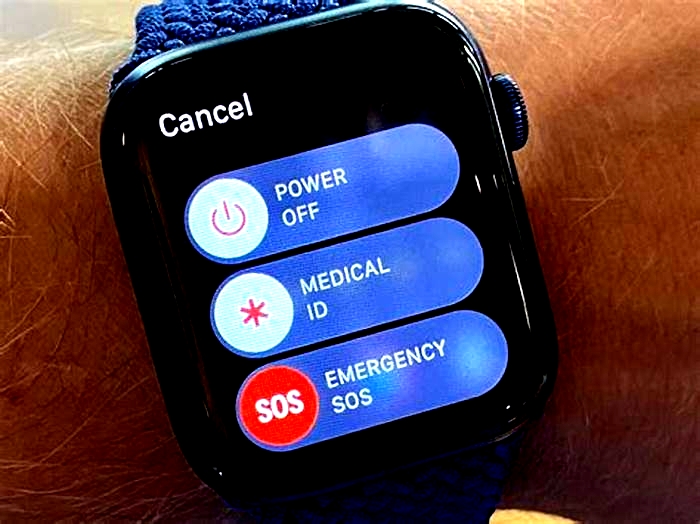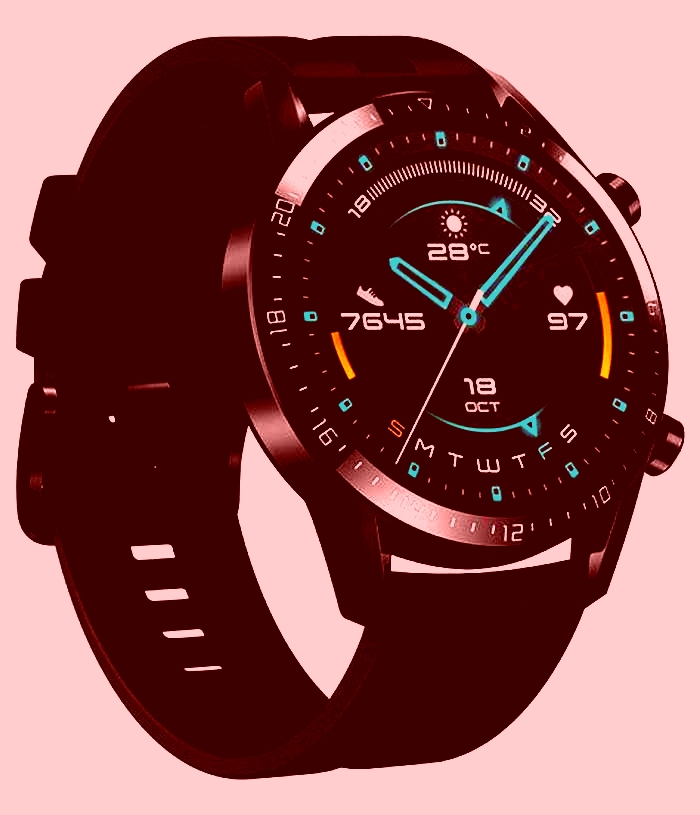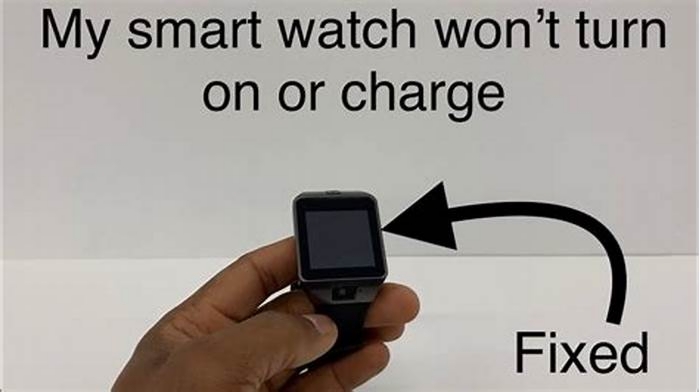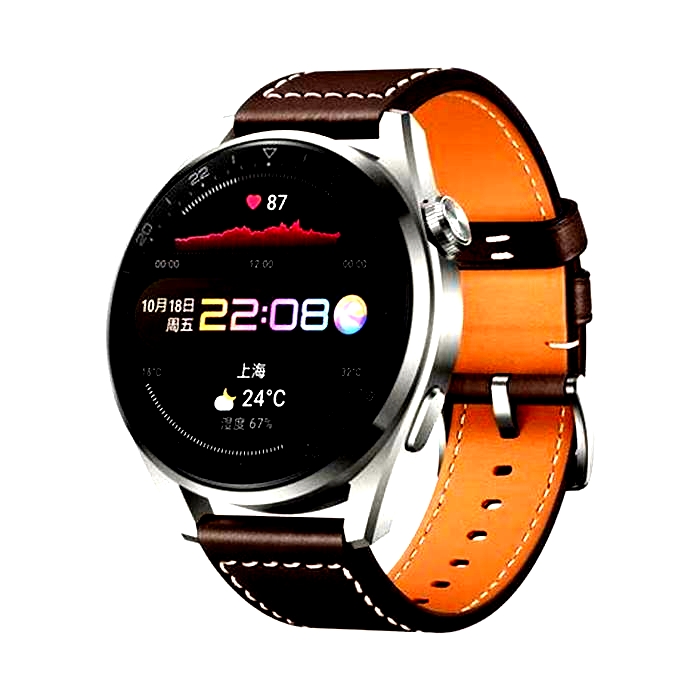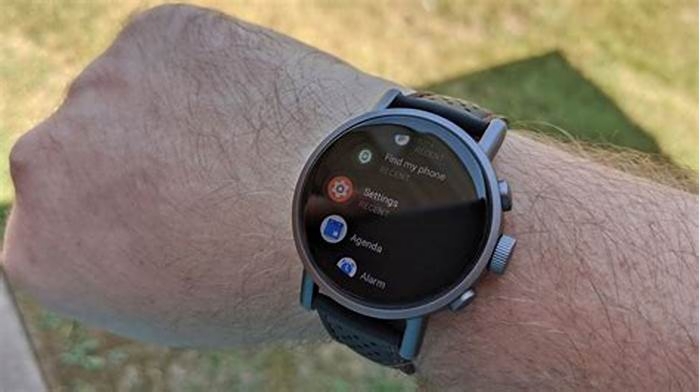Can you fix a stopped watch
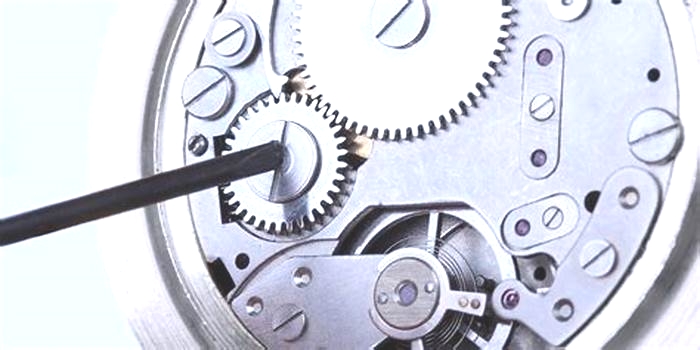
Pocket Watch Repair & Common Issues
With all mechanical devices, its imperative that you take the time to check your timepiece to make sure that its working correctly, however, keeping your pocket watch in good working order doesnt have to be taxing.
In this blog, were going to look at some of the most common issues that pocket watch owners face and how you can tackle them.
Scenario 1: My pocket watch does not wind fully
There are two common reasons why a pocket watch will not wind properly. The first is due to a broken winding mechanism which should only be fixed by a professional watchmaker, the second is a broken mainspring. If it is the mainspring you will feel slight resistance when youre winding the watch along with quiet pops every so often that seem to release the tension. In this instance, the mainspring simple needs to be replaced.
Scenario 2: What to do when a pocket watch slips into setting mode
If you own a pendant set watch you may find that the pendant sleeve determines the position of the stem. If the height of the sleeve is not correct, the watch can start to experience winding issues or slip back into setting mode. The easiest way to remedy this is to take it to a watchmaker who will be able to adjust the sleeve to the proper height.
Scenario 3: Is my pocket watch overwound?
When a pocket watch starts to show signs of working incorrectly, most owners immediately believe that the watch has been overwound. Whilst over winding a watch is not healthy for the timepiece, more often than not theres something else at play. If your watch has been wound but still does not tick, its more likely that it is one of the other scenarios within this guide thats the problem.
Scenario 4: My pocket watch ticks but then stops
If your pocket watch is fully wound, ticks but then stops working there are several possible causes.
If your watch is working correctly in certain positions, the balance staff pivots could be bent or broken or the hairspring could be rubbing against another part of the watch. If this is the case it needs to be examined by a watchmaker.
Cracked or broken jewels can also be responsible for the watch not moving. Jewels will often stay in place even after they are broken which will allow the watch to run for a short time before stopping.
Improper alignment can impact how a pocket watch works as your timepiece relies on very delicate precision. If the alignment is off then the watch can become overbanked and stop running for periods of time.
You watch may also stop If your watch hands have become bent or are not seated properly. Again, we recommend taking your watch to a professional watchmaker to get them adjusted properly.
Whether youre looking to upgrade your current timepiece or searching for your very first pocket watch either in gold or silver - we have a wide range of designs for you to choose from. Discover our full pocket watch collection today. Wondering how to wear your pocket watch? Check out our guide here.
6 Issues with Mechanical Watches and How to Fix Them

Mechanical watches are complicated devices. Some featuring thousands of tiny parts. As beautifully as they are engineered and designed, there is a lot that can go wrong with the internal components. A mechanical timepiece requires regular maintenance, servicing, and upkeep if you want it to last a long time. A properly cared for mechanical watch could last forever in theory. Below are some of the most commonly reported issues with mechanical watches.
6 Issues with Mechanical Watches and How to Fix Them
Mechanical watches typically need to be addressed by a pro. Understanding the issue so that you can properly tell a watch technician is really helpful. These watches are made to be precise without any battery, circuits, or internal chips. That makes the internal mechanics complicated and difficult to work on yourself.
1. The Internal Mechanisms and Gears are Loose
This is one of the most common mechanical watch issues.
If your mechanical watch has stopped ticking altogether, it is likely that there could be a blockage or jam in the internal mechanisms. Your mechanical watch, while sturdy on the outside, is a delicate balance of screws and springs which can be thrown out of balance or loosened by vigorous movement.
If you do sports wearing your watch you are more likely to loosen a screw or spring inside the watch. Even if you are very careful, your watch mechanisms can be loosened over time. Luckily, this is a very easy problem to fix and requires a professional diagnosis at your local watch repair.
2. The Mainspring Stops Working
If your watch has stopped working, it might be because the mainspring has stopped working. The mainspring is a tightly bound coil of wire inside the watch which makes it tick in time. If the the spring itself is defective, then the watch will no longer work. When you wind your watch using the knob on the side, you are preserving energy in the mainspring. Of course it may be just that you need to wind it, but if you feel any abnormal resistance winding it it could point to an issue with the mainspring.
If your watchs mainspring stops working, it can either be rewound by hand or replaced by an expert watch repair engineer.
3. Trapped Dirt Clogging the Movement
It could be that your watchs inner mechanism is lodged with dirt or dust. Even the tiniest amount of grime getting inside your watch can jam or damage the intricate mechanisms inside. Watch repair specialists work with careful precision to remove any clogging matter from inside your watch, to allow the mechanisms to unwind and rewind in the normal functionality again.
There are various ways dirt can get inside your watch. It could be a bad gasket and weak seal on the case. On a chronographer you have multiple stems and crowns that can lead to tiny particles of dirt getting inside.
These issues are most commonly solved through getting your watch serviced. A full movement overhaul entails taking all of the internal components apart, inspecting and cleaning them, and then putting it back together.
4. Water or Condensation Inside the Movement
Although most mechanical watches have watertight outer bodywork, no watch is totally waterproof. If your watch has been exposed to water, particularly for long periods of time, it might damage the inner mechanisms of the watch. Metal watches should generally be kept out of water, due to their ability to rust which creates problems both for the integrity of the metal and the aesthetic of the watch.
The back case has a gasket or seal that deteriorates overtime and can allow water in. It may even allow sweat from your wrist in while you are wearing it if the seal goes bad. Same with the seal on the crystal. Condensation is often the result of drastic temperature changes that can impact the movement.
Regular servicing of the watch is the best way to prevent these issues. When you get your watched serviced they inspect the seals and gaskets and replaces any parts that may lead to water or condensation getting inside.
5. Cracked Crystal Impacting the Mechanical Movement
If your glass watch face is smashed, the structure of the watch could be compromised. If shards of glass make their way into the mechanism of the watch, it could cause problems for the intricate springs and coils that make the watch tick. Although high quality mechanical watches have thick glass which is difficult to break, wearing your watch while doing sport, or dropping it onto a hard surface, could smash the watch face.
Any deep scratches or cracks in the crystal should alert you to stop wearing the watch and have the issue looked at. A small crack can lead to larger problems. A cracked crystal can lead to crystal shards in the movement.
6. The Watch is Running too Slowly or too Fast
All mechanical watches lose time slowly due to the nature of how they work.
It is likely that your watch is slightly out of sync with the way it was originally fine tuned by the watchmaker. All watches are precisely wound to run against a timegrapher when they are manufactured.
If your watch is suddenly running slowly or quickly, you should see a professional watchmaker to have your watch serviced.
How a Mechanical Watch Works
To better understand the issues, it is helpful to understand how these timepieces operate. They have no battery, no microchip, and no internal circuit boards. These are precision made machines designed to deliver accurate time keeping.
Authorized Repairs for Issues With Mechanical Watches
When considering any repair work, regardless if the issue is common or uncommon, your warranty should be considered. Most watch warranties contain a statement that says any unauthorized repair work will void the warranty. For some brands that includes simple repairs like replacing a crown.
If you own a mechanical watch and it is still under warranty, you should consider the imapcts on seeking a local repair service. A local repair shop or jewelry store can likely fix your watch, but can noy honor your warranty. That means they wont do it for free even if it is covered under warranty. That also means they likely will not guarantee their work one it is completed.
Its advisable to at least consult with your brands authorized service center if you still are under warranty coverage. While that often means you have to mail in your watch, you can get certified technicians to work on it and if the issue is covered under warranty the work is done for free.

Vintage Mechanical Watch
Mechanical Watch Restoration
If you own a vintage mechanical watch you may want to consider finding a watch restoration shop. These places differ from that of a watch repair shop. While they can fix common issues with mechanical watches, they will be better handle an aged mechanical watch. These shops understand how to find replacement parts for older timepieces and if needed the ability to fabricate mechanical watch parts. Any type of restoration work always needs to consider how the work impacts the watches value in the eyes of a collector.
Issues With Mechanical Watches Final Thoughts
There are certainly more then these common issues with mechanical watches. If you own one, the best thing to do is get any issues you have addressed immediately. The best way to avoid future issues with mechanical watches is through preventative maintenance like routine servicing and cleaning.
10 Common Quartz Watch Problems and How to Fix Them

Its easy to forget about taking care of your quartz watch. Your precious time piece needs to be serviced if you expect it to last a long time. Some folks often think of quartz watches as lasting forever (8 to 10 years), but without the proper maintenance, it wont make it that long. There are known Quartz watch problems and ways to resolve them.
We decided to do some research online and compile a list of the most frequently reported issues with Quartz watches. Its important to know that you can fix some of these on your own, but its best to use a repair shopif you are not under warranty and a service center if you are. Any unauthorized work not done by a service center can void your warranty.
In the 60s the quartz watch was invented, which was driven by a battery for power to vibrate a Quartz crystal. When these watches hit the market it created what is known as the Quartz revolution, which took over the timepiece industry by the 1980s. Since these pocket watches have been around for some time, we are more familiar with the most common quartz watch problems and have better ways of fixing them.
Here are the 10 most common issues reported with quartz watches. There are certainly other issues reported, but these are the 10 our research found to appear the most frequently.
10 Common Quartz Watch Problems and How to Fix Them

The Watch has Completely Stopped
9 times out of 10 this is a battery issue. Most watch batteries can last up to two years, but some quartz watches can extend past three or more years in battery life.
FIX: If your watch has stopped working you can find a watch technician near you that can check the battery for you.
The Second Hand is Jumping in Intervals
This is often an alert for automatic watches to the owner that the battery is almost dead. Watches that do this have a special electronic circuit that determines when the battery is almost drained. The watch will make the secondhand move awkwardly to let you know its time for battery replacement.
Fix: If you replace the battery the second hand will return to its normal state.
The Buttons Dont Work Properly
The push buttons are mounted onto a stem. The stem is encapsulated inside of a tube which resides inside of the watch interior. At the bottom of the tube, there is a tiny spring that pushes the buttons in and out as you press them. Over time dust, dirt, and corrosion can build up inside the tube preventing the button(s) from returning to their starting positions.
Fix: Bring your watch in for service and ask for them to replace the springs in the buttons.
Replacing the Battery Before It Has Reached its End of Life
Some people replace their battery before it has reached its end. The problem with replacing your battery before it reaches its end of life is that you have to break the seal on the back. This is a particular problem with water-resistant watches. Once you open the casing you break the factory seal and need to have a water resistance service performed on it.
Fix: Dont change your battery until it has actually died. Dont let new battery of it sit dead in the watch for too long thoughit can leak.

The Chronograph Function Shortens Your Battery Life
When you use the chronograph function it is a battery drain and can shorten your total battery life to under 1 year. Watch batteries are built for time and date keeping, extra functions like chronograph require extra power and work from your battery.
A frequent issue is that people forget to stop the special functions like the stopwatch when they are done using them, which keeps the battery working overtime.
Fix: To save power and get better battery life turn off the chronograph function immediately when you are finished using it.
Watch Runs When Its Not In Use, But Stops When You Wear it
This is a common problem associated with the circuitry inside the watch. When your watch is at room temperature it functions normally because all the circuits are on their contact points.
When you put the watch on your body heat causes a small rise in the internal temperature of the watch and expands the circuitry inside breaking the contact points. Then when you remove it from your wrist it returns to room temperature it starts running again.
Fix: Bring your watch to a service technician for maintenance and ask for the circuit to be replaced.
The Alarm Stopped Working After It Was Serviced
The cause of this issue is normally one of three things; the alarms contact spring is not positioned correctly, the case backing is not on correctly, or a problem exists with the alarm contact plate. All three of these are easy fix but will require you to have a service technician look at them.
Fix: Return your watch to the service technician and explain that the alarm stopped working at correct time after maintenance was performed.
The Second Hand Ticks Back in Forth With No Progress and The Watch Has Stopped
This is normally a watch maintenance issue. Essentially the watch is working from an electronics standpoint, but something is wrong mechanically. There are a variety of issues that can cause these symptoms.
Fix: Bring your watch to a service technician for maintenance. This usually can solve this issue.

The Display Has Turned Black and Numbers are No Longer Visible
This is a symptom of extreme shock to a quartz watch. Often the result of being dropped, stepped on, or banged against something. What has happened is the digital display has two thin pieces of glass and it has cracked allowing air to leak in and damage the conductive fluid. This is a very expensive repair.
Fix: The best alternative is often to replace the watch because fixing it costs more than the watch value.
The Display Only Shows Partial Digits and Letters
This is often the result of a shock to the watch like a drop that caused the internal circuitry to be damaged. Its also possible that the contact points have become corroded.
What is happening is that not all the contact points on the display are receiving the proper power from the battery. Fixing this can cost more than the value of a low to mid-level watch
Fix: For a less expensive watch replacing the watch is the best alternative. For a high-end watch, it may be more worth repairing or sending it to a manufacturers service center where the cost should be less than the watchs total value.
How a Quartz Watch Works?
If you are trying to troubleshoot an issue with a Quartz movement it is helpful to understand how they work. Watch the video below to learn more about how Quartz watches work
Authorized Watch Repair to Solve Quartz Watch Problems
Whenever you run into any issue with a watch, regardless of the movement type, you need to consider the warranty implications. Most watch manufacturers state in their warranty that any unauthorized repairs will void the warranty. That means if you or any local watch repair shop does any unauthorized work on the watch you may void the warranty.
If you have a quartz watch still under the manufacturers warranty (usually about 2 years), you should at least consider reaching out to their authorized service center. If the problem is covered then the repairs will be free. Problems t not covered, you will be given an estimate for the repair work. Dealing with an authorized repair center though, most often means mailing in your watch to them and awaiting the result.

Miyota 1m12 MO1035A Quartz Watch Movement Flat Range
Restoration of an Old Quartz Watch
If you have a vintage quartz watch that is having problems, you may want to consider a watch restoration shop instead of a repair shop. A repair shop deals with many types and styles of watches, but restoration is considered an entirely different discipline.
A watch restoration will know where to get replacement parts from the same time period your Quartz timepiece was manufactured. They will also specialize in fabrication. Its critical when having work done on a vintage timepiece, that you understand how any repairs and changes to the watch impact the overall value.
Solutions and Maintenance Tips for Quartz Watches

Proper Storage
When it comes to maintaining your quartz watch, one of the fundamental steps is ensuring proper storage. A watch case designed for quartz and mechanical watches alike provides a safe environment, keeping them away from extreme temperatures and potential water damage.
Its worth noting that where you store your watch can significantly impact its internal and external parts, including the quartz movement and crystal. Choose a dry, cool place and consider a watch box that offers compartments to protect each timepiece from physical impacts.
Regular Check-ups and Servicing
Ensuring that quartz watches are working properly involves routine check-ups. Just like a mechanical watch, your quartz watch can benefit significantly from professional servicing.
Watch repair specialists often examine the watch movement. Ensuring all tiny parts are working properly and addressing any movement oxidation that might be present. Theyll also ensure that the watch hands are moving as they should and that the quartz crystal is in good shape.
Battery Replacement and Management
The most common reason why a quartz watch stops working is a dead battery. Attending to the watch battery by ensuring a timely battery change is crucial to prevent issues like battery leakage, which can damage the circuit board and other internal components.
A new battery will not only keep your watch running, but it will also prevent potential damage around the battery compartment. Even if you invest in a luxury watch like a Tag Heuer, neglecting to replace the movement and battery can cause significant issues.
Handling Moisture Issues
Water resistance is a key feature of many watches, but its not an absolute guarantee against water damage. If a quartz watch is exposed to moisture, its imperative to address it promptly to prevent damage to the movement and quartz crystals.
Ensure the seals on old watch, are in good quality and check them regularly as part of managing moisture issues. Especially when you replace the battery or open the watch case for any reason.
Repairing and Replacing Crystals
The crystal is a crucial part of protecting the dial and internal components of the watch. Quartz crystals in quartz movements are delicate and might need to be replaced or repaired after a certain period or if physical damage occurs. If a crystal is scratched or cracked, the watch might not only look worn but might also be susceptible to dust and moisture. Repairing or replacing a crystal can be a cost-effective way to extend the lifespan of the watch.
Adjusting and Repairing Gears and Hands
Quartz movements typically require less maintenance than mechanical ones, but theyre not entirely free from issues. The gears and hands might need adjusting, especially if theyre not moving as they should or the watch stops working. A professional watch repair technician can carefully disassemble the watch, gently rub or clean the metal components, ensure theres no movement oxidation. Replace any tiny parts that arent functioning as they should.
Maintaining a quartz watch can ensure it serves you accurately for years to come. Whether youre a fan of Seiko, Tag Heuer, or any other watch brand, understanding the common problems and solutions regarding quartz movements helps in keeping your timepiece in pristine condition.
Comparing Quartz Watches with Mechanical Watches

Quartz watches and mechanical watches have been long debated in the horological circles, each having their distinct nuances and followers. Quartz watches, particularly, have made a significant mark in the industry due to their precision and ease of use. However, there are instances when quartz watches stop working, leading to a spiral of questions regarding their reliability.
In contrasting with an automatic watch, a quartz watch generally employs a stepper motor or step motor, powered by a battery, that propels the watch hands forward, guaranteeing accurate timekeeping. An automatic watch, conversely, utilizes a mechanical mechanism to measure time, driven by a mainspring, a coiled wire of special metal that is wound by turning the crown of the watch.
When delving into the realm of good Swiss quartz movements. Youll often encounter a higher price tag, which is attributed to the superior craftsmanship and accuracy. A brand new quartz movement, for instance, might warrant a significant investment upfront but tends to promise longevity with proper care. Though possibly requiring attention to intermittent electrical connections over time.
Contrarily, mechanical watches, especially automatic ones, are oftentimes cherished for their meticulous engineering and aesthetic movement, visible through transparent case backs. While a new watch with an entire movement from a revered Swiss manufacturer might lean on the pricier side. Those from emerging brands or those employing more cheap, accessible materials and mechanisms might offer a more affordable ingress into the mechanical watch world.
Quartz Watch Problems Conclusion
Most items on this list for mechanical watches are fixable. The best way to avoid Quartz watch problems is to be careful with your timepiece and keep up your self maintenance and regular servicing. If you take care of your watch it will last and look fantastic on your wrist every time you sport it.

